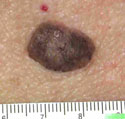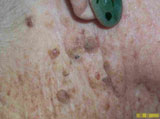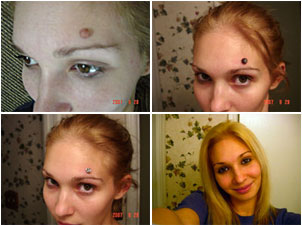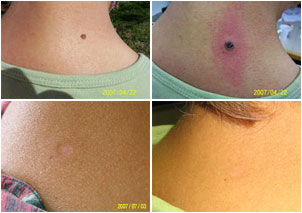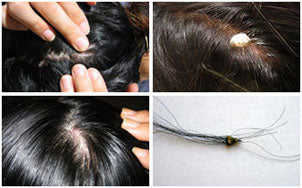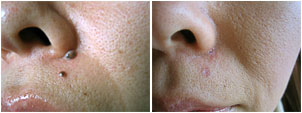About Moles
What is a Mole?
Types of Moles
Congenital Nevi
Junctional Moles
Compound Moles
Dermal Moles
Sebaceous Moles
Blue Moles
Characteristics of Moles
- Moles are the most common tumor in humans
- Mole occurrence is approximately 15-20 per adult
- Moles are present in various morphologic (shaped) types
- Some moles may become atypical and could increase the risk of developing skin cancer.
- Mole recurrence is usually symptomatic of melanoma
More Info About Moles
Most moles, including small, flat and raised moles, are benign but atypical moles (dysplastic nevi) may develop into malignant melanoma, a potentially fatal form of skin cancer. Atypical moles are usually hereditary. Most moles are bigger than a pencil eraser, and the shape and pigmentation are irregular. Treat your moles before they become dangerous. Wart Mole Vanish is designed to help remove small, flat, or raised moles in many cases with one application.
Congenital nevi are more prone to become cancerous than moles that develop later. Lentigo maligna (melanotic freckle of Hutchinson), most common on the face and typically occurring after the age of 50, first appear as flat spots containing two or more shades of tan. They gradually become larger and darker. One in three of these moles develop into a form of skin cancer known as lentigo maligna melanoma.
Moles Suspicious for Cancer
- Moles with spontaneous ulcerations or bleeding
- Moles with symptoms such as pain and itching
- Congenital and giant Nevus or Moles
- Moles showing changes in size and color
- Moles with unexplained inflammatory changes
- Moles usually occurring in junction and compound moles
Seborrheic Keratoses
- One 20 minute application is normal
- No daily application of creams, oils or acids!
- 100% natural
- Naturally cauterizes the cell tissue of moles, resulting in complete removal
- International multi-award winning
- Affordable and easy to use at home.
- Effective at removing most moles when used as directed, or your money back.


